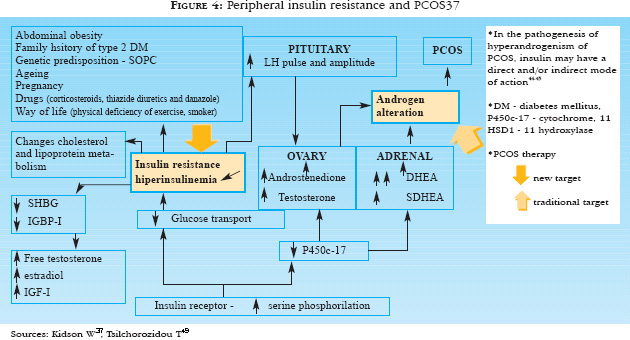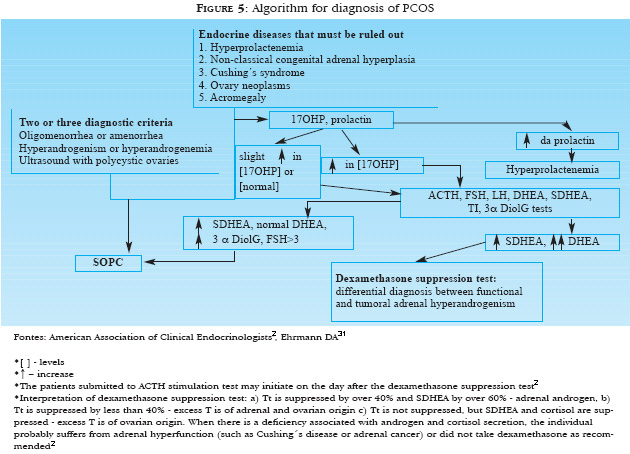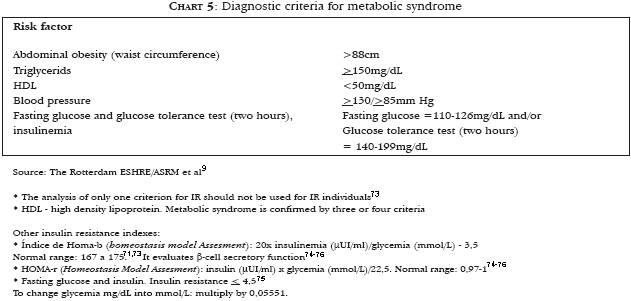The polycystic ovary syndrome is an extremely common endocrine disorder in women of chilbearing age. It is characterized by menstrual disturbance, hyperandrogenism and/or hyperandrogenemia. The primary pathophysiological defect is unknown, but important characteristics include insulin resistance, androgen excess and impaired gonadotropin dynamics. The most frequent clinical characteristics of polycystic ovary syndrome are associated with the pilosebaceous unit, such as hirsutism, acne, seborrhea and alopecia. Thus, the dermatologist may be responsible for making an early diagnosis of the syndrome, thus preventing delay in establishing preventive and therapeutic measures. The current management recommended for skin manifestations of polycystic ovary syndrome includes combined oral contraceptives, antiandrogens and insulin-sensitizing agents, besides changes in life style. This is a review article on diagnosis, pathophysiology and treatment of polycystic ovary syndrome. The authors emphasize that a clear understanding of pathophysiology of this syndrome, especially by dermatologists, is crucial for its preventive treatment through the different phases in the life of women.
Hyperandrogenism; Hyperandrogenism; Skin; Insulin resistance; Hypothalamic-pituitary axis; Treatment











